Thingiverse

Retinal Projection Display by nrp
by Thingiverse
Last crawled date: 3 years ago
A full writeup with links is at my blog: http://eclecti.cc/hardware/blinded-by-the-light-diy-retinal-projection
After grabbing a couple of Microvision SHOWWX laser picoprojectors when they went up on Woot a few months back, I started looking for ways to use them. Microvision started out of a project at the University of Washington HITLab in 1994 to develop laser based virtual retinal displays. That is, a display that projects an image directly onto the user’s retina. This allows for a potentially very compact see through display that is only visible by the user. The system they developed reflected lasers off of a mechanical resonant scanner to deflect them vertically and horizontally, placing pixels at the right locations to form an image. The lasers were modulated to vary the brightness of the pixels. The SHOWWX is essentially this setup after 15 years of development to make it inexpensive and miniaturize it to pocket size. The rest of the retinal display system was a set of optics designed to reduce the scanned image down to a point at the user’s pupil. I thought I would try to shrink and cheapen that part of it as well.
The setup I built is basically what Michael Tidwell describes in his Virtual Retinal Displays thesis. The projected image passes through a beamsplitter where some of the light is reflected away, reflects off of a spherical concave mirror to reduce back down to a point, and hits the other side of the beamsplitter, where some of the light passes through and the rest is reflected to the user’s pupil along with light passing through the splitter from the outside world. For the sake of cost savings, all of my mirrors are from the bargain bin of Anchor Optics. The key to the project is picking the right size and focal length of the spherical mirror. The larger setup in the picture uses a 57mm focal length mirror, which results in a fairly large rig with the laser scanner sitting at twice the focal length (the center of curvature) away from the mirror. The smaller setup has a focal length around 27mm, which results in an image that is too close to focus on unless I take my contact lenses out.
Aside from my inability to find properly shaped mirrors, the big weakness of this rig is the size of the exit pupil. The exit pupil is basically the useful size of the image leaving the system. In this case, it is the width of the point that hits the user’s pupil. If the point is too small, eye movement will cause eye pupil to miss the image entirely. For this system, the exit pupil is only around 1.5 mm wide, which makes it completely impractical to use head mounted or really, any other way. I paused work on this project a few months ago with the intention of coming back to it when I could think of a way around this. With usable see through consumer head mounted displays just around the bend though, I figured it was time to abandon the project and publish the mistakes I’ve made in case it helps anyone else.
After grabbing a couple of Microvision SHOWWX laser picoprojectors when they went up on Woot a few months back, I started looking for ways to use them. Microvision started out of a project at the University of Washington HITLab in 1994 to develop laser based virtual retinal displays. That is, a display that projects an image directly onto the user’s retina. This allows for a potentially very compact see through display that is only visible by the user. The system they developed reflected lasers off of a mechanical resonant scanner to deflect them vertically and horizontally, placing pixels at the right locations to form an image. The lasers were modulated to vary the brightness of the pixels. The SHOWWX is essentially this setup after 15 years of development to make it inexpensive and miniaturize it to pocket size. The rest of the retinal display system was a set of optics designed to reduce the scanned image down to a point at the user’s pupil. I thought I would try to shrink and cheapen that part of it as well.
The setup I built is basically what Michael Tidwell describes in his Virtual Retinal Displays thesis. The projected image passes through a beamsplitter where some of the light is reflected away, reflects off of a spherical concave mirror to reduce back down to a point, and hits the other side of the beamsplitter, where some of the light passes through and the rest is reflected to the user’s pupil along with light passing through the splitter from the outside world. For the sake of cost savings, all of my mirrors are from the bargain bin of Anchor Optics. The key to the project is picking the right size and focal length of the spherical mirror. The larger setup in the picture uses a 57mm focal length mirror, which results in a fairly large rig with the laser scanner sitting at twice the focal length (the center of curvature) away from the mirror. The smaller setup has a focal length around 27mm, which results in an image that is too close to focus on unless I take my contact lenses out.
Aside from my inability to find properly shaped mirrors, the big weakness of this rig is the size of the exit pupil. The exit pupil is basically the useful size of the image leaving the system. In this case, it is the width of the point that hits the user’s pupil. If the point is too small, eye movement will cause eye pupil to miss the image entirely. For this system, the exit pupil is only around 1.5 mm wide, which makes it completely impractical to use head mounted or really, any other way. I paused work on this project a few months ago with the intention of coming back to it when I could think of a way around this. With usable see through consumer head mounted displays just around the bend though, I figured it was time to abandon the project and publish the mistakes I’ve made in case it helps anyone else.
Similar models
thingiverse
free

2" laser-fiber Collimator 90deg by sheldonr
...pound (blue magic), and demonstrated functionality with green laser. perhaps gloss spraypaint would make it even more reflective.
grabcad
free

Atlantic Sting Ray
... the lighting. i finally got it where i want it to be...
this is just a simple ocean scene with a sting ray as the focal point.
grabcad
free

Decorative Wall Lights with Mirror Back
...with mirror back
grabcad
serpentine colored light system mounted on brass wall sconce, with wood framed mirror to reflect lights
3dwarehouse
free

Rear Projection System 3660x2050
...rear projection system 3660x2050
3dwarehouse
rear projection system 3660x2050 screen focal length 4800mm
thingiverse
free

Retroreflector by Zach_S
...ad different sizes or share the onshape link with you.
edit 3/18/21: i have uploaded a step version of the part for easy remixes.
grabcad
free

Lunar Heliostat
...sing lens. the torch can be rotated through x ,y and z axis, which helps the rover to redirect the solar energy wherever needed.
cg_trader
$10

Suffolk Mirror by Birch Lane
...
combining functionality and fashion, accent mirrors offer useful reflection and are also an attractive focal point in any room.
3dwarehouse
free

sunspotter
... sun spots on it. it's very safe, but always use care with lenses and the sun, it could blind you, blah blah blah #sunspotter
thingiverse
free

Co2 laser nozzle air assist laser pointer
...e perfect focal point. side key for red laser pointer. 2 styles 50.8mm(2.0")focal length and 38.1mm(1.5") focal length.
thingiverse
free

0.1X^2 Parabolic Focal Point Demonstration by AtomKemp
...and pass a 1/8" dowel through the center. aim the parabola at a light source and record the focal point on the dowel. enjoy!
Retinal
turbosquid
$140

Retinal layers detail microscopic and schematic
...layers detail microscopic and schematic for download as blend on turbosquid: 3d models for games, architecture, videos. (1501500)
thingiverse
free

porta spugnette in ferro /retine by birdblack
...porta spugnette in ferro /retine by birdblack
thingiverse
contenitore da parete per paiette da cucina
3dfindit
free

RETIN 104 L 386,22 zł zobacz
...retin 104 l 386,22 zł zobacz
3dfind.it
catalog: elkim lighting
3dfindit
free

RETIN 104 M 257,07 zł zobacz
...retin 104 m 257,07 zł zobacz
3dfind.it
catalog: elkim lighting
3dfindit
free

RETIN 8130 XL 381,30 zł zobacz
...retin 8130 xl 381,30 zł zobacz
3dfind.it
catalog: elkim lighting
3dfindit
free

RETIN 104 XL 527,67 zł - 643,29 zł zobacz
...retin 104 xl 527,67 zł - 643,29 zł zobacz
3dfind.it
catalog: elkim lighting
thingiverse
free

CRE-003 OphaGo - Retinal Imaging Adapter - Huced Despro ITS by crewolprint3d
...: djoko kuswanto, st., m.biotech.
let's develop this together and immediately upload your modification so we can also use it.
thingiverse
free

oDocs Fundus Smartphone Ophthalmoscope by ophthalmicdocs
...ophthalmicdocs thingiverse the first open source 3d printable smartphone retinal imaging adapter. the device when used in conjunction with...
cg_trader
$15

Retinal Scanner
...l scanner
cg trader
3d asset retinal scanner electronics bladerunner 2049 movie, formats obj, fbx, ready for 3d animation and ot
Nrp
turbosquid
free

Mauser for NRP
... available on turbo squid, the world's leading provider of digital 3d models for visualization, films, television, and games.
turbosquid
free

Fallout stimpack for NRP
... available on turbo squid, the world's leading provider of digital 3d models for visualization, films, television, and games.
turbosquid
free

Fallout laser pistol for NRP
... available on turbo squid, the world's leading provider of digital 3d models for visualization, films, television, and games.
thingiverse
free

Customizable Schlage key based on nrp's key by Dr_MOO
...omizable schlage key based on nrp's key by dr_moo
thingiverse
this is a customizable version of nrp's schlage house key.
thingiverse
free

Reddit Colbertlien by nrp
...n, but i needed something quick for the latest reddit gifts exchange. also a derivative of http://www.thingiverse.com/thing:5172
thingiverse
free

120mm Fan Grille by nrp
... blocking airflow. that is, although a 120mm fan has a maximum diameter of ~115mm, the housing for it tapers out to about 126mm.
thingiverse
free

Prusa i3 MK3 LED Strip by nrp
...k3 led strip by nrp
thingiverse
this uses an ledmy 24v light strip. this is rated at 4.8w/m, and i used a 20cm section for ~1w.
thingiverse
free

Parametric Chassis with Hole by nrp
...y parametric, and the box retains the parameters from hotkey's origin. it requires the mcad library for its teardrop module.
thingiverse
free

Parametric Filament Guide for RepRap by nrp
...h to a 8mm rod. the width and length of the channel are parameters that can be modified. the attached stl has a 4x36mm channel.
thingiverse
free

Sash Lift (Window Pull) by nrp
...e in openscad. you should make sure to print them in the default orientation of the .stl for strength on the axis that needs it.
Display
3ddd
$1

Display
...display
3ddd
терминал
display computer 3d model
3d_export
$5
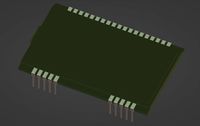
Display
...display
3dexport
display<br>verts 2.262<br>faces 3.928
turbosquid
$8

Display
...turbosquid
royalty free 3d model display for download as fbx on turbosquid: 3d models for games, architecture, videos. (1634534)
3ddd
$1
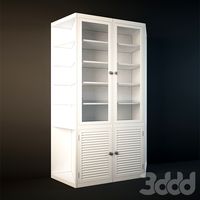
Display cabinet
...display cabinet
3ddd
витрина
display cabinet
turbosquid
$50

display
... available on turbo squid, the world's leading provider of digital 3d models for visualization, films, television, and games.
turbosquid
$25

DISPLAY
... available on turbo squid, the world's leading provider of digital 3d models for visualization, films, television, and games.
turbosquid
$10
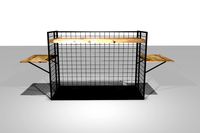
Display
...e 3d model display for download as ma, max, obj, fbx, and dae on turbosquid: 3d models for games, architecture, videos. (1387472)
3d_export
$6
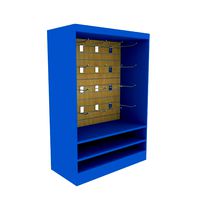
display stand
...display stand
3dexport
super market display stand
3d_ocean
$12
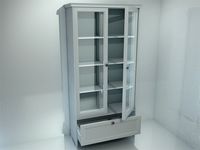
Display Case
...rnishing furniture glass storage vetrinetta white
a 3d model of a display case. the texture for the back of the case is provided.
3d_export
$30

Vehicle display
...vehicle display
3dexport
vehicle display consists of podium and vehicle cover no vehicle there is a veiled vehicle silhouette
Projection
3d_export
$7
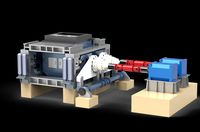
project
...project
3dexport
project
3d_export
$20
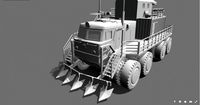
Project
...project
3dexport
design_connected
$16

Project Chair
...project chair
designconnected
rex kralj project chair computer generated 3d model. designed by žitnik, marjan.
3ddd
$1

lectric Project
...настроены. сетка очень плотная.
доступно только для группы "profi"
про группу "profi" можно прочитать в чаво
3d_ocean
$19

Soon project
...kup. made in 3ds max 2013 1- 3dsmax with vray render included material and light 2- obj file 3- fbx file hope you like it plea...
turbosquid
$49

Joint | Project
...squid
royalty free 3d model joint | project for download as on turbosquid: 3d models for games, architecture, videos. (1297983)
turbosquid
$11
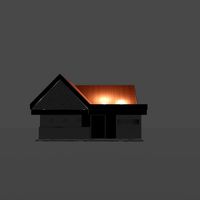
house project
...bosquid
royalty free 3d model house project for download as on turbosquid: 3d models for games, architecture, videos. (1672482)
turbosquid
$450
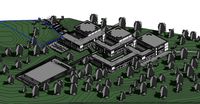
University project
...
royalty free 3d model university project for download as rvt on turbosquid: 3d models for games, architecture, videos. (1463354)
turbosquid
$30
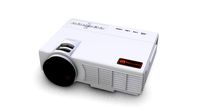
smart projecter
...lty free 3d model smart projecter for download as max and obj on turbosquid: 3d models for games, architecture, videos. (1236214)
3d_export
$5

project drawing
...project drawing
3dexport
project drawing and 3d model<br>format jpg sldprt dwg<br>by 3d make
